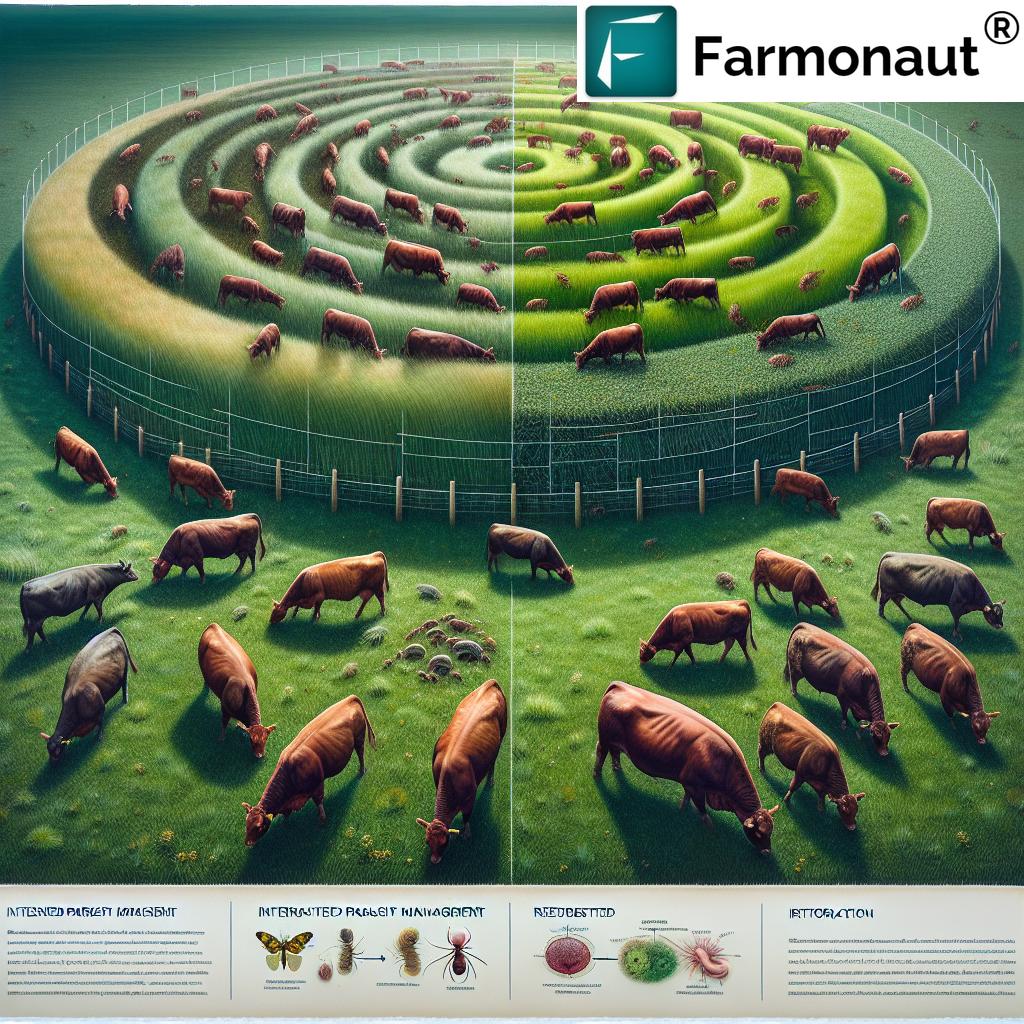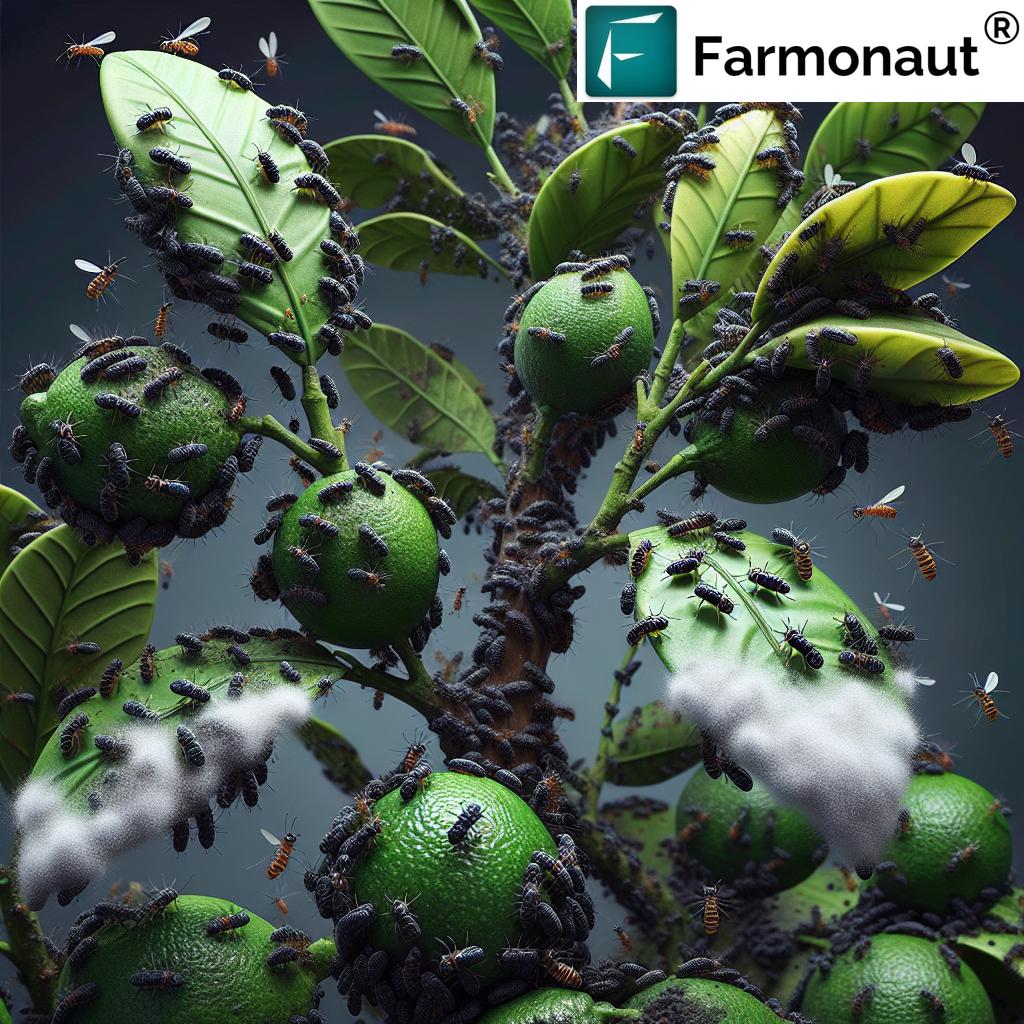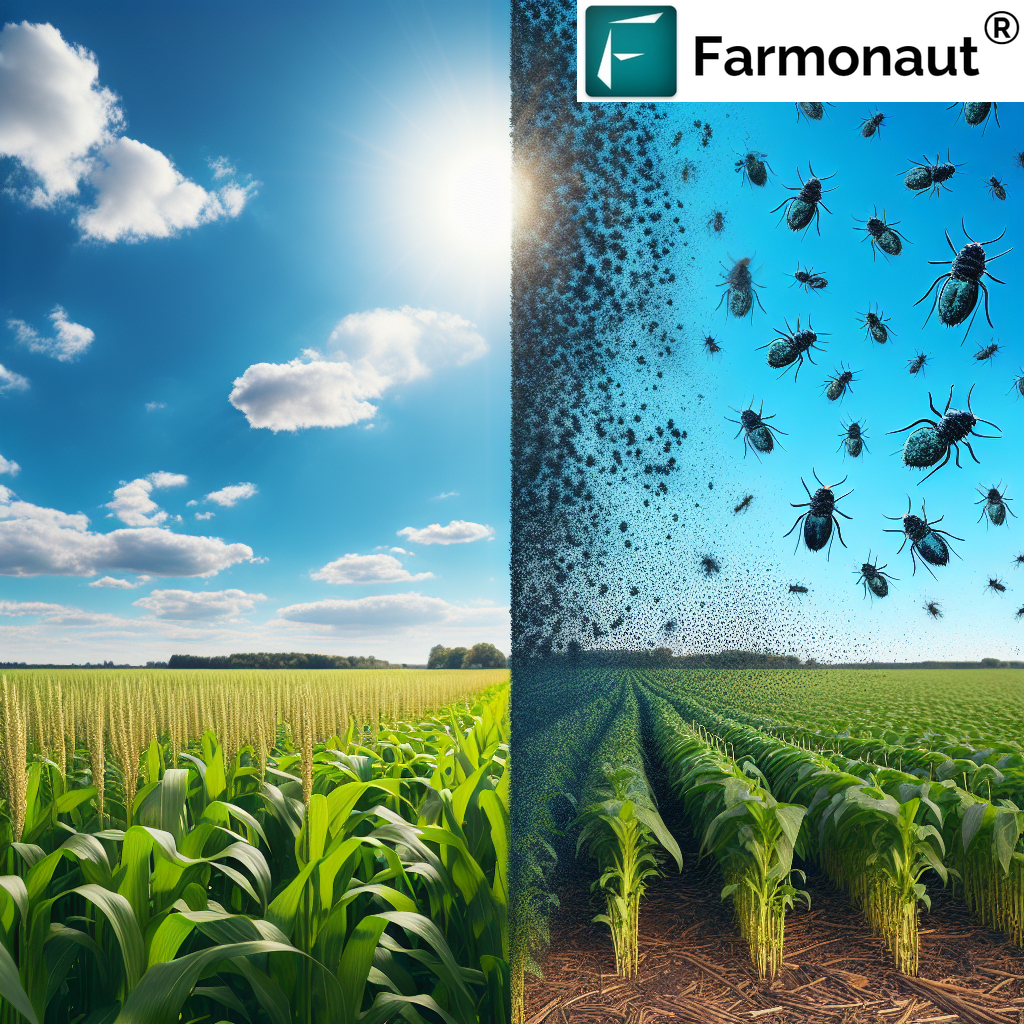Parasite Control in Cattle: 7 Proven Tips for Herds
“Over 80% of cattle herds experience parasite infestations annually, impacting herd health and productivity significantly.”
Table of Contents
- Introduction
- Types of Parasites Affecting Cattle
- Recognizing Signs of Parasite Infestations in Cattle
- Preventive Measures for Cattle Parasites
- 7 Proven Tips for Parasite Control in Cattle
- Comparison Table of Parasite Control Methods
- Treatment Options for Cattle Parasites
- Integrated Parasite Management in Cattle (IPM)
- Challenges, Resistance, and Economic Impact
- Leveraging Technology for Parasite Management
- Frequently Asked Questions (FAQ)
- Conclusion
Introduction
Effective parasite control in cattle is crucial for maintaining herd health, improving milk and meat production, and ensuring economic sustainability for livestock farmers. Parasite infestations—arising from a range of internal and external parasites—can cause significant damage, reducing growth rates, triggering diseases, and leading to decreased productivity.
In this comprehensive guide, we dive deep into cattle parasite control, explaining types of parasites, the signs of infestations, integrated management strategies, preventive measures, and available treatment options. Whether you are a smallholder or manage large-scale pastures, understanding and implementing an effective parasite management program will help keep your cattle herd healthy and productive.
Ready to take livestock management to the next level? Use Farmonaut’s Large-Scale Farm Management App for satellite-powered field monitoring and advisory!



Interested in integrating satellite and weather data into your cattle management system?
Explore Farmonaut’s API or read the
Developer Docs.
Types of Parasites Affecting Cattle
Cattle are susceptible to a wide variety of internal and external parasites, each causing unique health challenges and productivity losses. Understanding these types is the first step toward a comprehensive parasite management program.
Internal Parasites (Endoparasites) in Cattle
- Gastrointestinal Worms
- Ostertagia ostertagi (small brown stomach worm): Can cause significant weight loss, diarrhea, and, in severe cases, even mortality. Heavily infested cattle exhibit reduced growth rates and lower milk production.
- Liver Flukes
- Fasciola hepatica: Damages liver tissue, leading to decreased metabolic functions, reduced feed intake, slower growth, and in some cases, lower fertility and milk output.
- Lungworms
- Dictyocaulus viviparus: Affects the respiratory system, causing coughing, nasal discharge, reduced lung function, which makes affected livestock more susceptible to secondary infections and further productivity loss.
External Parasites (Ectoparasites) in Cattle
-
Cattle Ticks: Rhipicephalus microplus
- Transmits serious tick-borne diseases such as babesiosis and anaplasmosis, both of which can result in fever, anemia, jaundice, and herd-wide productivity declines.
-
Lice
- Infestations cause intense skin irritation, visible hair loss, and can lead to secondary bacterial infections, which may require additional treatments.
-
Flies: Haematobia irritans (horn flies)
- These flies feed on cattle blood, reduce comfort by constant irritation, and act as vectors for various pathogens.
All these internal and external parasites can have a severe impact on herd health, making early detection and effective management vital.
Recognizing Signs of Parasite Infestations in Cattle
Timely intervention is anchored in our ability to recognize the signs of parasite infestations in cattle. These signs vary with the specific parasite but commonly include:
- Weight loss: Unexplained reduction in body mass despite adequate nutrition.
- Diarrhea: Loose, watery manure, often recurring, indicating gastrointestinal involvement.
- Coughing and Nasal Discharge: Indicative of respiratory distress, likely from lungworm infestation.
- Irritated Skin and Hair Loss: Persistent scratching, bald patches, or rough coat texture suggest external parasites such as lice or ticks.
- Reduced Milk Production: Declining milk yield in cows is a frequent consequence of chronic infestations.
- Lethargy: General reduced activity and reluctance to graze or move, reflecting overall health compromise.
Preventive Measures for Cattle Parasites
Implementing preventive measures for cattle parasites is far more sustainable and cost-effective than treating established infestations. Prevention focuses on breaking the parasite life cycle and minimizing exposure to infective stages in the environment.
1. Pasture Management for Livestock Health
Rotational grazing is one of the cornerstone strategies for parasite control in cattle. By dividing pastures into several sections and moving the cattle between them, we allow each area to rest and recover, which significantly reduces the parasite loads. In combination with resting pastures for certain periods, this approach disrupts the parasite lifecycle and decreases environmental contamination.
- Multi-species grazing: Introducing sheep or goats, which are often not susceptible to the same parasites as cattle, can further help reduce parasite burdens in pastures.
2. Manure Management
Regular removal and proper disposal of manure is crucial in reducing the amount of parasite eggs and larvae in the environment. Composting manure for sufficient time before field application can further kill parasites.
3. Biosecurity Measures
New animals can introduce resistant parasites into your established herd. Quarantining and inspecting/treating all arrivals before mingling protects your herd and maintains low parasite loads.
4. Optimal Nutrition
Providing a balanced diet helps improve cattle immunity. Well-nourished cows can resist infestations better and recover faster when affected.
“Effective parasite control can reduce cattle weight loss by up to 30% during peak infestation periods.”
7 Proven Tips for Parasite Control in Cattle
An integrated approach yields the most effective results for controlling parasites in cattle. Here are seven proven tips every livestock manager should implement:
- Rotational Grazing for Parasite Reduction:
Regularly moving cattle between divided pasture sections helps break the parasite lifecycle, reducing parasite loads and giving pastures time to rest. - Resting Pastures:
Allowing each pasture section to rest for sufficient periods interrupts the survival of infective parasite stages, decreasing re-infestation rates. - Multi-Species Grazing:
Introducing sheep or goats helps reduce cattle parasite loads, as many parasites are host-specific. This practice diversifies pasture use and reduces overall exposure. - Strategic Deworming:
Use of anthelmintics (dewormers) should be based on actual parasite loads, determined by fecal egg counts and seasonal parasite risk. - Proper Manure Management:
Consistent removal, composting, or spreading of manure limits environmental contamination by parasite eggs and larvae. - Strict Biosecurity:
Quarantine and treat all new cattle prior to herd integration, along with regular herd health monitoring, to prevent the introduction and spread of resistant parasites. - Balanced Nutrition:
Providing adequate nutrition ensures strong immune response in cattle, reducing susceptibility and aiding recovery from infestations.
Comparison Table of Parasite Control Methods
| Control Method | Estimated Effectiveness (%) | Cost Level ($-$$$) | Best Used For | Frequency of Application | Additional Notes |
|---|---|---|---|---|---|
| Rotational Grazing | 65-80% | $ | All internal & external | Seasonal/Ongoing | Reduces parasite loads, improves pasture utilization. |
| Pasture Rest | 60-75% | $ | Internal parasites | Based on lifecycle (e.g., 6-8 weeks) | Disrupts parasite life cycle. |
| Multi-Species Grazing | 50-70% | $$ | Gastrointestinal worms | Ongoing | Works best when species do not share parasites. |
| Strategic Deworming (Anthelmintics) | 75-95% | $$ | Internal parasites | As recommended (e.g., quarterly/seasonally) | Risk of resistance; follow withdrawal periods. |
| Manure Management | 40-60% | $ | Both internal & external | Weekly/Biweekly | Reduces environmental contamination. |
| Strict Biosecurity | 70-85% | $ | All parasites | At each introduction | Prevents new parasites from entering herd. |
| Balanced Nutrition | 30-55% | $$ | All parasites | Continuous | Enhances immunity; indirect effect. |
Treatment Options for Cattle Parasites
While prevention and management reduce the risk, active infestations may still require intervention. Here are the main treatment options for cattle parasites:
Anthelmintics: Deworming Cattle
Anthelmintics are medicines specifically formulated to target internal parasites in cattle such as gastrointestinal worms, liver flukes, and lungworms. The three main administration routes are:
- Oral Drenches
- Injectables
- Pour-ons
Best Practices:
- Always follow veterinary recommendations and product labels to ensure safety and effectiveness.
- Rotate different classes of anthelmintics to reduce risk of anthelmintic resistance in livestock.
- Track treatment times to avoid drug residues in milk or meat—observe prescribed withdrawal periods.
Insecticides: Treating External Parasites
Insecticides are crucial for managing external parasites in cattle, such as ticks, lice, and horn flies. Application formats include:
- Pour-ons
- Sprays
- Ear Tags
Monitor and rotate products to minimize resistance and maximize safety for both cattle and handlers.
Farmonaut’s Fleet Management Solution helps optimize farm operations including timely, scheduled treatments and livestock movement, ensuring interventions happen when most effective.
Integrated Parasite Management in Cattle (IPM)
Integrated Parasite Management in cattle (IPM) refers to a holistic strategy that integrates monitoring, targeted treatments, environmental management, and resistance mitigation for optimum, long-term control. IPM for cattle typically involves:
- Regular Monitoring: Use fecal egg counts, visual herd inspections, and monitoring devices. Modern technology can provide satellite data for broader pasture health insights. Farmonaut’s crop health monitoring and AI-based advisory are examples of smart decision-support tools for broader grazing management (see more via Agro-Admin App).
- Strategic Treatment: Treat animals with demonstrated need based on clinical signs, season, testing, or herd history rather than blanket treatments, which supports resistance management.
- Resistance Management: Rotate classes of anthelmintic drugs, avoid under-dosing, and maintain untreated “refugia” populations to slow the development of drug-resistant parasites.
- Environmental Measures: Incorporate established practices—rotational grazing, pasture rest, manure management, and strict biosecurity.
To further boost sustainable practices, we recommend exploring Farmonaut’s Carbon Footprinting Service. This enables farms to track and minimize their environmental impact, which is increasingly vital in global livestock management.
Challenges, Resistance, and Economic Impact
Anthelmintic Resistance in Livestock
Parasite resistance develops when a population of parasites evolves to survive traditional doses of dewormers (anthelmintics). Contributing factors include frequent and widespread use of similar treatment products, under-dosing, and not rotating active classes. Rotate dewormers as part of your parasite control program, and opt for treatment only when monitoring signals actual need.
Environmental and Operational Factors
- Weather conditions: Mild, humid climates support longer survival of eggs and larvae in pastures, increasing overall risk of cattle infestation.
- Operational complexity: Larger herds, frequent movement, and introduction of new livestock increase management difficulty and risk of outbreaks.
Economic Impact of Parasites on Cattle Productivity
Parasite infestations result in decreased growth rates, milk production losses, increased treatment costs, and even livestock deaths—all adding up to severe economic losses for producers. Proactive, integrated management is the most cost-effective approach for maintaining herd health and overall profitability.
For seamless supply chain traceability and enhanced farm-to-market trust, discover Farmonaut’s Product Traceability Solutions.
Leveraging Technology for Parasite Management with Farmonaut
At Farmonaut, we recognize that traditional parasite management can only go so far. Modern livestock operations benefit from data-driven insights, real-time monitoring, and integrated farm management. Our platform empowers farmers to:
- Monitor pasture condition using satellite imagery for timely decision-making on rotational grazing, pasture rest, and livestock movement.
- Benefit from AI-based advisory systems that suggest ideal treatment windows, flag abnormal pasture health, and recommend optimal herd management strategies.
- Utilize blockchain-based traceability to enhance consumer trust and transparency for cattle products, crucial for milk and meat producers targeting high-value markets.
- Optimize resources through fleet and resource management tools, reducing the risk of delayed treatments or overgrazing.
Explore more about our advanced solutions for Crop, Plantation, and Forest Advisory in our app.
- Access real-time crop and pasture health monitoring via web/browser app or mobile (Android & iOS).
- Leverage the flexibility and scalability of subscription-based access, with packages for individual farmers, cooperatives, and agribusinesses.
- APIs available for tech-enabled livestock businesses.
Frequently Asked Questions (FAQ)
What are the most common internal and external parasites in cattle?
The most common internal parasites include gastrointestinal worms like Ostertagia ostertagi (small brown stomach worm), liver flukes (Fasciola hepatica), and lungworms (Dictyocaulus viviparus). For external parasites, cattle are often affected by Rhipicephalus microplus (ticks), lice, and flies (especially horn flies, Haematobia irritans).
How can I recognize signs of parasite infestations in cattle?
Look for persistent weight loss, diarrhea, coughing, nasal discharge, and visible hair loss or skin irritation. Reduced milk production and lethargy are other major indicators.
What is rotational grazing and how does it reduce parasites?
Rotational grazing involves moving livestock through different pasture sections to prevent overgrazing and break the life cycle of parasites that require time in the environment before becoming infective, drastically reducing pasture contamination and re-infestation.
Can I rely solely on chemical treatments for effective parasite control?
Sole reliance on chemical treatments can lead to anthelmintic resistance in livestock. An integrated strategy combining preventive measures, regular monitoring, and targeted treatments is proven to offer the best, sustainable results.
How do environmental conditions affect parasite survival?
Parasites thrive in mild, wet climates. Wet weather enables longer survival of eggs and larvae in pastures, increasing the risk of animals picking up infestations during grazing.
How does Farmonaut support cattle parasite control?
We help farmers make data-driven decisions for pasture management, treatment scheduling, and disease monitoring through satellite imagery, AI, and real-time alerts. Our platform supports more efficient, scalable, and sustainable parasite management, improving cattle health and productivity.
Why is regular monitoring important in parasite control?
Regular monitoring allows for targeted treatments, reduced drug resistance, and more efficient resource use. Tools like fecal egg counts and Farmonaut’s advanced crop/pasture monitoring enhance your ability to respond promptly and accurately.
Conclusion
Comprehensive cattle parasite control involves understanding parasite types, recognizing infestation signs, implementing effective preventive measures, and applying appropriate treatments backed by ongoing monitoring. Modern approaches—like integrated parasite management in cattle—reduce risks of resistance, lower treatment costs, and boost herd productivity.
By using advanced digital tools, embracing data-driven management, and collaborating with veterinarians, livestock owners can achieve optimal herd health. At Farmonaut, our mission is to make precision agriculture and livestock management accessible, affordable, and sustainable for farmers everywhere.
Start optimizing your cattle management with Farmonaut’s satellite-powered platform today—empowering healthier herds and a more profitable future.
Want to learn more? Download our app for real-time pasture health, resource management, and expert advisory:


















